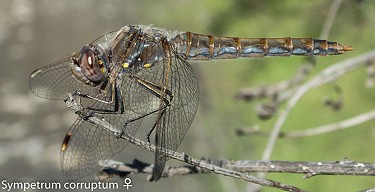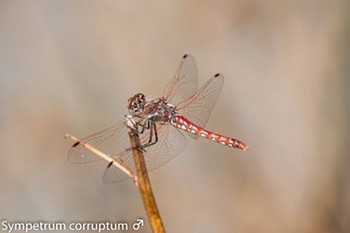News Blog

- Anthony Westkamper
- Female variegated meadowhawk
Science always starts with a question. A few winters ago, walking along my favorite stretch of the Van Duzen River on a sunny day, I was surprised to see a dragonfly. Dragonflies spend most of their lives in the water as predatory larvae looking nothing like the graceful fliers everyone knows. As adults they commonly live for a month or so, hunt, breed, lay eggs and die, only to repeat the cycle as they have for the last 300 million years. The adults are largely adapted to warm weather, so seeing one in the middle of winter I thought maybe it was a straggler who had “hatched” late, or gotten blown here by some vagrant wind. Over the next several weeks I saw it repeatedly and a few others as well. My photo archive shows they were all female.

- Anthony Westkamper
- Male variegated meadowhawk
So here are some mysteries:
• Were they born here? The fact that some members of the species migrate does not mean they all do. If not, where do they come from? Do they lay eggs here or is this just a spot to overwinter before completing a journey elsewhere. I've noted some unique individuals over many days.
• Is this spot unique? There are hints this is not as uncommon as once thought. I have seen some a mile upstream. A week ago I thought I saw one flying across a neighbor's front yard. It was too far for a positive ID, but the size, and flight style were correct.
• All of the ones I've photographed between Nov. and March are females. Why is that?
• Insects use several different mechanisms for surviving freezing temperatures. Which ones do these animals use?
So, if you are out walking along one of our local rivers on a sunny day this winter and happen to see a small gray dragonfly perched on a rock or low stick it is very likely a female variegated meadowhawk. You might stop and ponder where she's been and where she may be going. Right now no one knows.
Comments
Showing 1-1 of 1